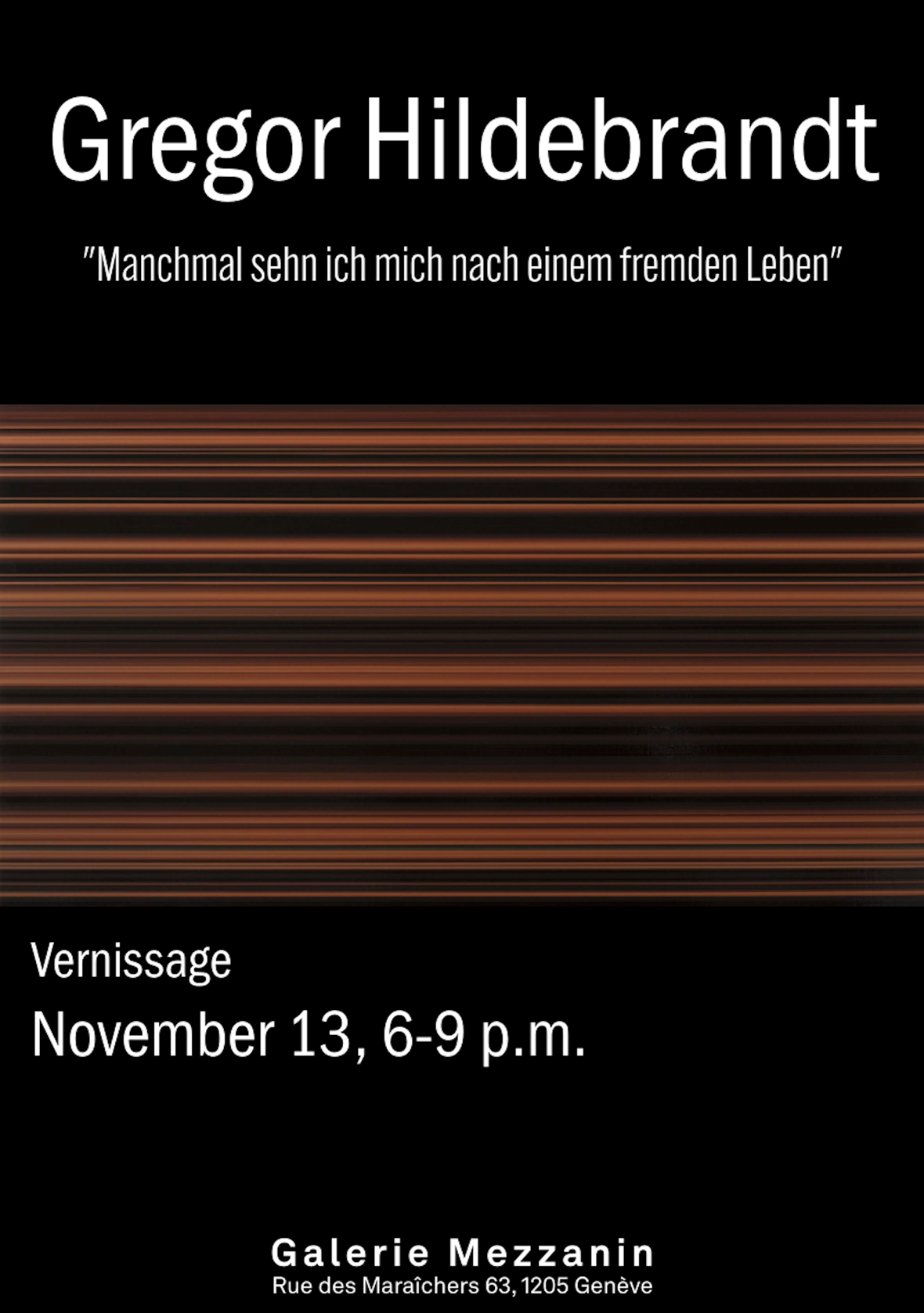
GREGOR HILDEBRANDT
Manchmal sehn ich mich nach einem fremden Leben
Galerie Mezzanin
Opening: 13 I 11 I 2025 from 6 to 9 pm
Exhibition: 14 I 11 I 2025 – 28 I 02 I 2026 from 6 to 8 pm
For his first solo exhibition in Geneva, Gregor Hildebrandt takes over Mezzanin Gallery. He presents, among other things, an imposing installation. The space seems to be split in two by a temporary architectural structure. We are transported to what could be a different place or an evocation of a potential memory of it, because, in keeping with the formal vocabulary that has characterised his work in recent years, the structure is covered with magnetic tape. The themes here are clearly transfer, memory and remembering.
Until a few years ago, the reproduction of the world had a medium. The analogue world had invented tools, video and audio cassettes, vinyl records… This implied more or less standard formats, a more or less expected colour range, a shape. These reference forms from our collective memory are appropriated by the artist according to different protocols. 33 rpm records, which have become found objects, used for decoration, are assembled into columns. The spines of audio cassettes are used as segments for the representationsof figures. Magnetic tapes give a chromatic range to series of quasi-monochromes. All these works remind us, in this essentially digital world, that memory once had a materiality that we had to take care of. The materials were fragile and had to be handled with care.
Gregor Hildebrandt uses a formal vocabulary that straddles nostalgia and appropriation. He is on the cusp of this technical revolution that has permanently transformed the world’s reproductive capabilities. As an artist, he reminds us that, until now, we have given little thought to the impact of this transformation on the definition of the role of artists.
These works challenge our usual definition of art, which is still entirely analogue. We often continue to imagine artists as delicate sensors, capable of storing and retransmitting impulses from reality in a corresponding mode. But with tautological irony, Gregor Hildebrandt turns the project on its head. He saturates the message. Objects become cold and smooth again. He dissolves our memory to cover objects with it. Memory becomes the layer necessary for art to exist. The artist may not be in tune with reality, but with the density of our memories.
Judging by the title, this is not just about memory, but also about desire. Gregor Hildebrandt knows that we visit exhibitions as places full of objects waiting to be discovered. Their destiny is to serve as a temporary space outside the studio, a space of transfer for artists. Visitors dream of a link, a connection, a contact with their own history. These places attempt to crystallise, for a time, the projections of each individual.
In the exhibition space, it becomes very clear that our imagination is made up of fragments of crackling stories that others have kindly recorded for us.
Samuel Gross